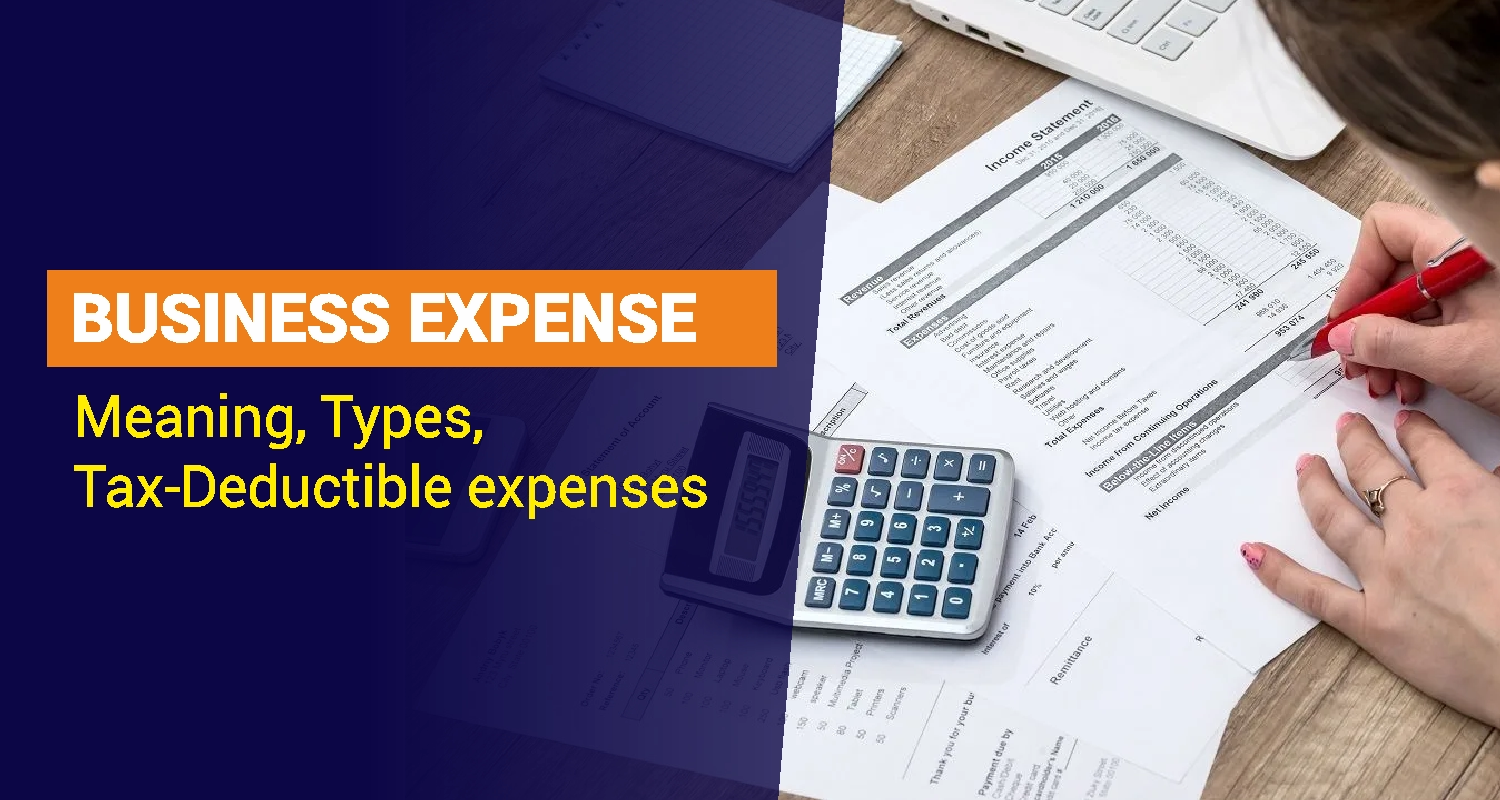Calculate How Much Working Capital Is Needed to Run Your Business Smoothly
Businesses often struggle between balancing too little & too much cash when it comes to working capital. Check out the ways to calculate working capital here!

Working capital measures a company’s ability to pay current liabilities with its assets. It provides an insight into the business short-term financial health, ability to pay off debts within a year, and operational efficiency. If a company lacks sufficient working capital, it will incur losses and have difficulty staying afloat. Learn how to determine your business working capital requirement in this article.
What is Working Capital?
Working capital is the difference between a company’s current assets and liabilities. Current assets are those that you can convert to cash within a year; examples include cash, accounts receivable, and inventory. Current liabilities, on the other hand, are obligations like accounts payable and payroll that you must pay within a year.
A positive working capital indicates good financial health, while a negative working capital means the company has more short-term obligations than available assets. However, too much working capital has its downsides. Excessive working capital means funds are idle, not generating profits, and preventing the business from achieving a satisfactory return on its investments. So, if you analyse a company’s financial situation, you must ensure the company efficiently uses its financial resources to meet daily operational expenses. The different types of working capital include:
- Gross working capital: This is the total current assets of the company, like cash, account receivables, and short-term revenues. It excludes current liabilities. Understanding this is crucial for efficient financial management.
- Net working capital: This is the difference between a company’s current assets and liabilities. It shows the company’s ability to meet short-term obligations and manage day-to-day operations.
- Permanent working capital: This is the minimum working capital needed for ongoing operations. It’s the baseline amount for regular business activities.
- Temporary working capital: This working capital fluctuates due to seasonal variations, short-term projects, or temporary factors. It's the difference between total working capital and permanent working capital.
- Regular working capital: This is needed for daily activities like paying salaries, wages, raw materials, and transportation costs.
- Reserve margin working capital: This is an extra working capital buffer for unforeseen circumstances or uncertainties.
- Variable working capital: This includes temporary and fluctuating parts of working capital that change with business activities or seasonal demand. There are two types:
- Seasonal variable working capital (used seasonally when fund requirements are high).
- Special variable working capital (used for specific, non-routine projects or activities beyond regular operations).
Factors Affecting Working Capital
1. Current Assets
A company can convert its current assets into cash within one year or one business cycle, whichever comes first. They exclude long-term or illiquid investments, such as hedge funds, real estate, and collectables.
Examples of current assets include highly liquid marketable securities such as stocks, mutual funds, bonds, and exchange-traded funds (ETFs); checking and savings accounts; money market accounts; cash and cash equivalents, inventory, accounts receivable, and other shorter-term prepaid expenses.
2. Current Liabilities
A company's current liabilities are all debts and expenses to pay within one year or one business cycle. Current liabilities include capital leases due within one year, dividends payable, and long-term debt that is now due.
Examples of liabilities include utilities, rent, materials, and supplies; accrued liabilities; accounts payable; interest payments on debt; and income taxes accrued.
Sapna aapka. Business Loan Humara.
Apply NowHow To Calculate Working Capital
Although there are different ways to calculate your working capital, most companies prefer to express it in terms of net working capital (NWC). You can calculate your net working capital by subtracting the current liabilities from the existing assets of your business.
Working Capital Formula:
The generally used formula to compute the working capital is as follows-
Net Working Capital = Current Assets — Current Liabilities
The working capital formula shows your short-term liquid assets after paying off short-term liabilities. It measures a company's short-term liquidity, which is crucial for financial analysis, modelling, and cash flow management.
Working Capital Ratio Formula:
The working capital or current ratio measures a company’s short-term financial health and efficiency. You can calculate it using the following working capital ratio formula-
Working Capital Ratio = Current Assets ÷ Current Liabilities
A ratio above 1 means the company can easily meet its short-term obligations, showing good liquidity. A ratio below 1 suggests potential difficulties in covering short-term liabilities, needing external help or asset sales. For investors and creditors, this ratio is a crucial sign of financial stability and debt repayment ability. A higher ratio builds confidence in the company, though an extremely high ratio might mean inefficient resource use. A low ratio raises concerns about financial risk and meeting obligations.
List of all Working Capital Formulas & Their Importance:
The following are the alternative formulae used for working capital calculation-
1. Working Capital = Current Assets – Cash – Current Liabilities (excluding cash)
In this formula, cash isn't part of current assets. Instead, you subtract it from current liabilities separately.
2. Working Capital = Accounts Receivable + Inventory – Accounts Payable
Here, accounts receivable is what others owe you, and accounts payable is what you owe. Inventory is the value of goods that can be sold and turned into cash.
3. Net Working Capital = Current Assets (excluding cash) – Current Liabilities (excluding debt)
This formula calculates net working capital by subtracting current liabilities (excluding debt) from current assets (excluding cash). It gives a clearer view of working capital, ignoring cash and long-term debt.
4. Operating Working Capital = Current Assets – Non-operating Current Assets
Non-operating current assets are separate from your core activities, like spare machinery or unused land.
5. Change in Working Capital = Working Capital (Previous Year) – Working Capital (Current Year)
This formula shows the change in working capital from the previous year. It's a good indicator of whether a company's financial health is improving or worsening.
What’s the difference between working capital and cash flow?
Your company’s working capital is the difference between its current assets and liabilities. Cash flow is the amount of cash moving in and out of your business during a specific time frame. It's how much you earn versus how much you spend on overhead, vendors, and other expenses. Working capital provides a snapshot of your company's current financial health, showing how well you can handle unexpected market disruptions. Cash flow, on the other hand, is more forward-looking, showing how much cash your business generates over time. Working capital fluctuates and isn't used for future projections, whereas cash flow gives you a big picture of your earnings and outlays. However, there are exceptions to this interpretation. A company with high revenue but also high debt might have positive cash flow but little working capital. A new business might have substantial working capital from initial investments but no significant cash flow yet. Understanding both working capital and cash flow is crucial. Each impacts the other and affects your company's sustainability and success.
Working Capital Indications
In an effective working capital management system, current assets will exceed current liabilities.
- A company’s positive net working capital indicates that it can meet your short-term business needs.
- A nil net working capital indicates that your company has just enough money to meet its short-term obligations.
- A negative net working capital implies that it will need more deficit to meet its current obligations.
Similarly, working capital ratios in the range of 1.2 to 2 are considered healthy for a business.
Working Capital Example
Assume your company has the following assets and liabilities:
|
Current Asset |
Amount (Rs.) |
Current Liability |
Amount (Rs.) |
|
Debtors |
Rs.1.5 lakh |
Creditors |
Rs.3 lakh |
|
Cash |
Rs.25,000 |
Outstanding expenses |
Rs.25,000 |
|
Raw materials |
Rs.15,000 |
||
|
Inventory |
Rs.6,000 |
||
|
Obsolete stock |
Rs.25,000 |
||
|
Prepaid expenses |
Rs.2,000 |
||
|
Total |
Rs.2.23 lakh |
Total |
Rs.3.25 lakh |
Based on the information above, working capital = 2.23 lakh - 3.25 lakh = 1.02 lakh
With a negative net working capital, your business may have difficulty running day-to-day operations and miss out on lucrative business opportunities. In such cases, finance the deficit and develop a sound working capital management policy to keep your business run smoothly. You can accomplish that by cutting down on your business expenses, boosting sales, or getting a loan.
Get A Business Loan With IIFL Finance
With a working capital loan from IIFL Finance, your business can meet any financial need. We help you grow your business more comfortably with low EMIs and flexible repayment terms.
If you are taking a business loan, you must determine your EMI amount. Using the business loan EMI calculator, you can also calculate your EMI and choose the most suitable product. Get help from our business loan calculator now!
Frequently Asked Questions
Q1. How much working capital does your business need?
Ans. The current ratio can determine whether a firm has enough working capital. Generally, a firm should aim for a ratio of 2. However, different industries or businesses may have varying ratios.
Q2. Does Working Capital Change?
Ans. Working capital changes with time. It's because a company’s current liabilities and current assets change over 12 months.
Sapna aapka. Business Loan Humara.
Apply NowDisclaimer: The information contained in this post is for general information purposes only. IIFL Finance Limited (including its associates and affiliates) ("the Company") assumes no liability or responsibility for any errors or omissions in the contents of this post and under no circumstances shall the Company be liable for any damage, loss, injury or disappointment etc. suffered by any reader. All information in this post is provided "as is", with no guarantee of completeness, accuracy, timeliness or of the results etc. obtained from the use of this information, and without warranty of any kind, express or implied, including, but not limited to warranties of performance, merchantability and fitness for a particular purpose. Given the changing nature of laws, rules and regulations, there may be delays, omissions or inaccuracies in the information contained in this post. The information on this post is provided with the understanding that the Company is not herein engaged in rendering legal, accounting, tax, or other professional advice and services. As such, it should not be used as a substitute for consultation with professional accounting, tax, legal or other competent advisers. This post may contain views and opinions which are those of the authors and do not necessarily reflect the official policy or position of any other agency or organization. This post may also contain links to external websites that are not provided or maintained by or in any way affiliated with the Company and the Company does not guarantee the accuracy, relevance, timeliness, or completeness of any information on these external websites. Any/ all (Gold/ Personal/ Business) loan product specifications and information that maybe stated in this post are subject to change from time to time, readers are advised to reach out to the Company for current specifications of the said (Gold/ Personal/ Business) loan.



